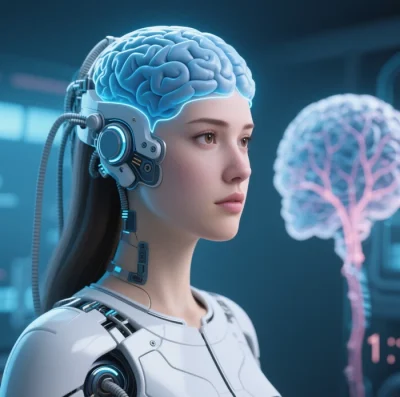
(as of April 2025)
1. Technological Breakthroughs and Core Directions
Neurotechnology and brain-computer interfaces (NeurotechBCI) have established three key pathways in medical rehabilitation:
- Invasive BCI: Led by Neuralink and Tsinghua University’s NEO, addressing challenges in minimally invasive implantation and long-term biocompatibility.
- Non-invasive BCI: Pioneered by Meta’s neural decoding and BrainCo’s bionic limbs, focusing on high-precision signal acquisition and multimodal feedback.
- Hybrid Closed-Loop Systems: Integrating EEG, fMRI, and functional electrical stimulation (FES), such as MIT’s brain-spinal cord stimulation interface.
2. Progress in Key Disease Areas
Stroke and Motor Function Recovery
- Motor Imagery Breakthrough: Shanghai Advanced Research Institute’s MI-BCI algorithm improved hand function recovery in stroke patients by 40%.
- Exoskeleton-BCI Integration: Japan’s Cyberdyne HAL system enables paralyzed patients to walk autonomously via cortical intent detection.
- Closed-Loop Neuroregulation: ZhenTian’s BCI-VR-robotics system enhances upper limb mobility by 35% through neural plasticity induction.
Spinal Cord Injury (SCI) Rehabilitation
- Wireless Implant Revolution: Tsinghua’s NEO device achieved the first at-home BCI trial, allowing patients to perform tasks like drinking via brainwave-controlled gloves (accuracy >90%).
- Brain-Spinal Interfaces: EPFL’s closed-loop system restored standing ability in chronic paraplegics by converting motor cortex signals into epidural stimulation.
- Speech Restoration: Harvard’s brain-controlled speech synthesizer enables basic communication at 15 words/minute for aphasia patients.
Neurodegenerative Disease Intervention
- Parkinson’s Therapy: NeuroOne’s Evo sEEG electrodes reduce tremors by 68% through basal ganglia monitoring and stimulation (FDA-approved).
- Alzheimer’s Early Intervention: Fudan University’s non-invasive BCI slows cognitive decline by modulating default mode network activity.
Mental Health Treatment
- Depression Therapy: JingYu Medical’s dual-target deep brain stimulation achieved 55% remission in treatment-resistant depression (FDA Breakthrough Designation).
- Addiction Control: NeuroSee’s neurofeedback system reduced heroin relapse rates to 22% within six months.
3. Cutting-Edge Innovations
| Technology | Breakthrough | Impact |
|---|---|---|
| Flexible Electronics | Blackrock Neuralace’s 3072-channel electrode arrays | Epileptic focus localization to 0.5mm precision |
| Optogenetic BCI | Stanford’s wireless nano-probes regulate neurons | 92% motor recovery in Parkinsonian mice |
| Quantum-Neural Fusion | Microsoft Station Q’s CRISPR-entanglement research | Opens quantum-genetic therapy avenues |
| Metaverse Rehabilitation | Meta’s Project Aria enables 2cm-precision VR navigation | 40% faster balance recovery in stroke patients |
4. Regional Development and Policy
North America
- Neuralink’s Telepathy system achieves 12 words/minute neural typing.
- Synchron’s Stentrode enters FDA Breakthrough Pathway for ALS.
China
- Tsinghua’s NEO advances wireless power and permanent implants (commercialization by 2027).
- QiangNao Tech’s bionic hand delivers 18-DOF control with <50ms tactile feedback.
EU
- AI Act mandates ethical modules in BCI algorithms.
- TMSi’s 256-channel dry electrode system achieves 30dB SNR.
5. Challenges and Future Trends
Technical Barriers
- Non-invasive EEG resolution limits (~1cm/10ms).
- Implant longevity (5-year survival: 68%).
- AI-driven calibration to reduce BCI setup time.
Ethical Concerns
- Neuralink’s brain data storage sparks personhood debates.
- High costs (>$200,000) exacerbate healthcare inequality.
Future Directions
- DARPA’s N³ program for non-invasive whole-brain interfaces (2030 target).
- MIT’s programmable neural progenitor cells for damage repair.
- Musk’s “Neural Lace” concept for 50 TB/year brain-cloud data exchange.
6. Clinical Milestones (2023–2025)
- October 2023: Tsinghua’s NEO completes first at-home BCI trial.
- March 2024: FDA approves Synchron Stentrode for ALS.
- November 2024: Cyberdyne HAL certified by China NMPA.
- January 2025: Neuralink Telepathy launches multicenter RCT (n=1,000).
- March 2025: EU launches €3B NeuroTech2030 initiative.
Conclusion: From Functional Replacement to Neural Remodeling
NeurotechBCI has transitioned from replacing lost functions to enabling neural plasticity. By 2030, advancements in flexible electronics, optogenetics, and quantum computing aim to:
- Restore independent living for >50% of chronic paralysis patients.
- Reduce post-stroke motor recovery to <3 months.
- Achieve 95% accuracy in early neurodegenerative disease diagnosis.
To ensure equitable benefits, global governance must evolve through interdisciplinary ethics committees, diffusion control frameworks, and affordable licensing models.
Data sourced from publicly available information and subject to verification.






